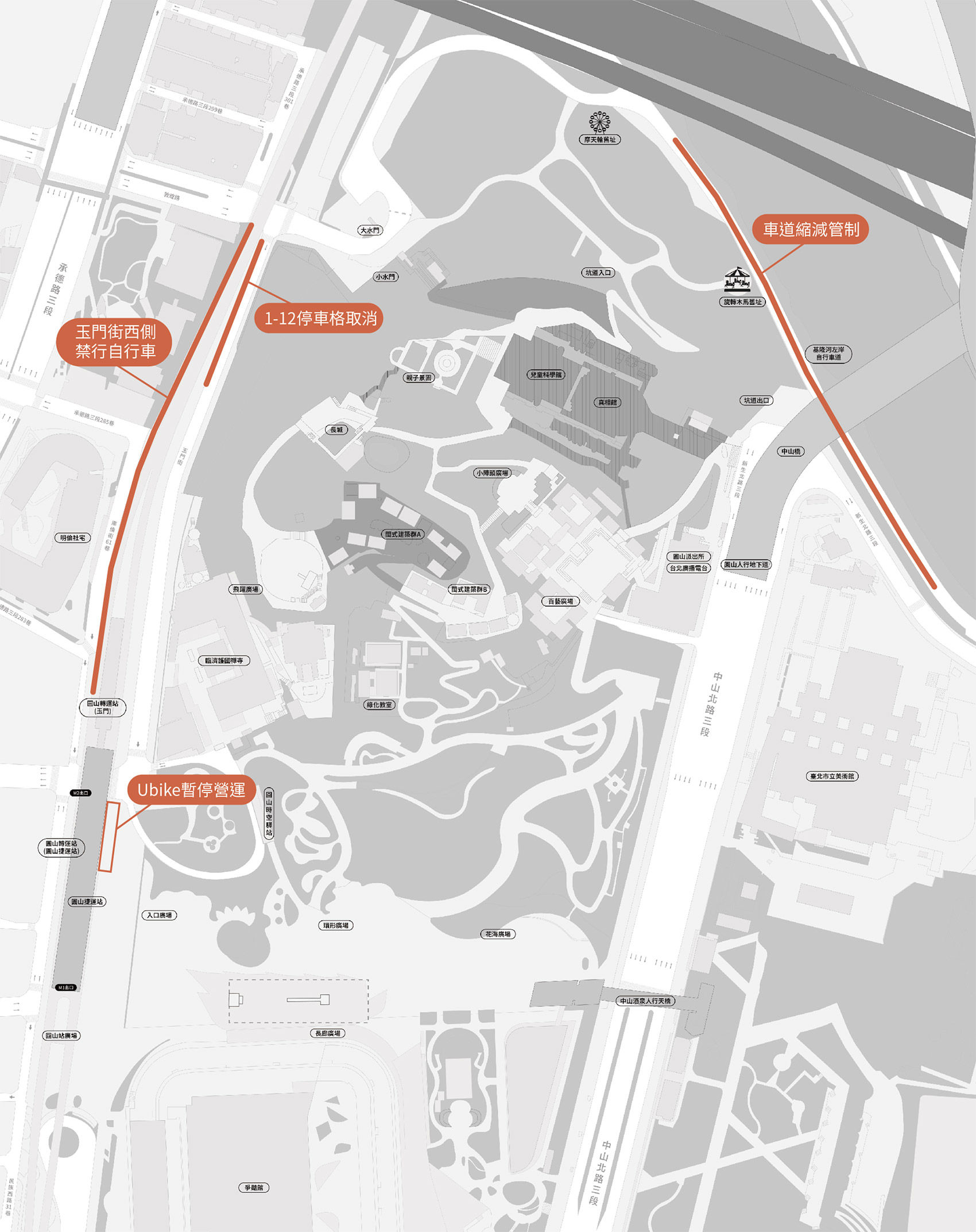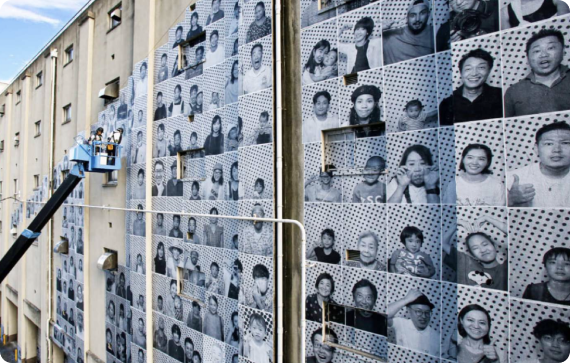自由・力量_24小時Live Painting 24 hours Live Painting

E03.國家電影及視聽文化中心
Taiwan Film and Audiovisual Institute
單位
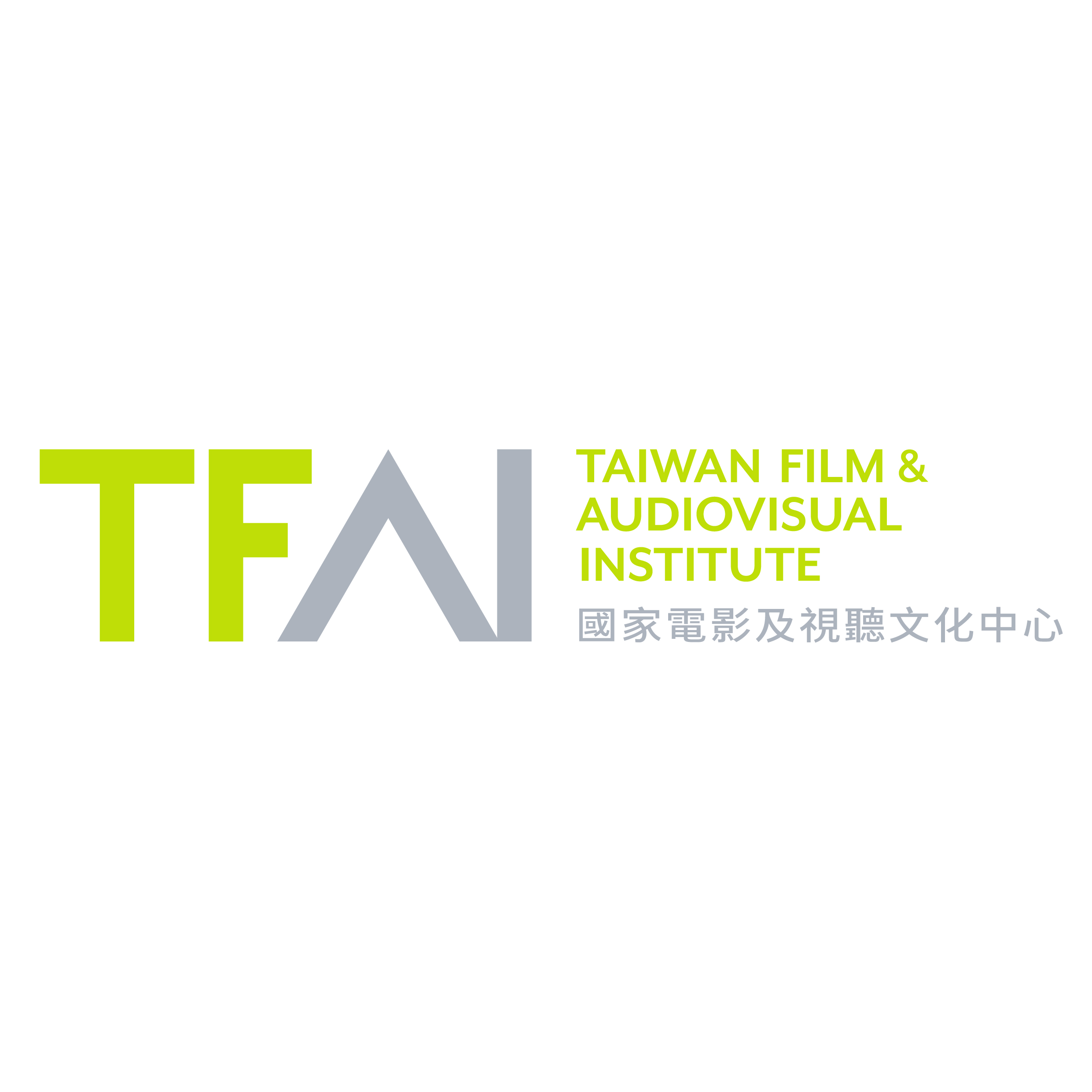
國家電影及視聽文化中心
Taiwan Film and Audiovisual Institute 臺灣 / Taiwan
「國家電影及視聽文化中心」始於1978年,致力透過數位修復技術保存臺灣電影、電視、廣播等檔案,也擔負推廣與教育。至今已高階數位掃描661部,合作修復76部,自主修復19部電影。館內設有影廳、電影圖書館與常設展覽。
The Taiwan Film and Audiovisual Institute was founded in 1978 and is committed to preserving Taiwanese film, television, radio and other archives through digital restoration technology, and is also responsible for promotion and education. So far, 661 films have been digitally scanned at a high level, 76 films have been restored through cooperation, and 19 films have been restored independently. The museum has a cinema, a film library and permanent exhibitions.
國家電影及視聽文化中心官方網站:https://www.tfai.org.tw
HI, LIGHT!影展
“HI, LIGHT!” 是一場以光影為媒介的對話,也是對城市記憶的溫柔招呼。當燈光亮起,銀幕上浮現的是半世紀前的臺北—圓山動物園的笑語與喧鬧、圓山大飯店的華麗與莊嚴,以及人們享受日常生活的微小幸福片刻。這些看似遙遠的紀錄片與影像,透過放映再次被喚醒,不只是歷史的見證,更是一封寫給現在的情書。
我們希望觀眾能在 “HI, LIGHT!” 影展中,讓光說聲 “HI”,向記憶伸出手。這不是一場靜態的回顧,而是邀請每位參與者重新詮釋、重塑與分享自己的城市故事。在被燈光幻影打亮的我們心底,歷史不再嚴禁觸碰修改,反而鼓勵參與、回應。
圓山,這個重疊著舊與新的場域裡,本影展不僅是一面映照過去的光,也是一幕引領我們理解當下、想像未來的影。讓我們在這裡相遇,讓光影串聯記憶,一起成為故事的一部分。
“HI, LIGHT!” A Dialogue of Light and Memory
“HI, LIGHT!” is a conversation mediated through light and shadow — a gentle greeting to the city’s collective memory.
As the lights come on, the screen awakens scenes from Taipei half a century ago: the laughter and bustle of the Yuanshan Zoo, the grandeur and solemnity of the Grand Hotel, and fleeting moments of everyday joy that once defined the city’s rhythm.
These long-forgotten images and documentaries, once again projected, are not merely witnesses of history, but love letters written to the present.
Through the “HI, LIGHT!” film program, we invite audiences to let light say “hi” — to reach out toward memory.
This is not a static retrospective, but an open invitation for everyone to reinterpret, reconstruct, and share their own stories of the city. Illuminated by the glow of cinema, history is no longer untouchable or immutable; it becomes participatory, responsive, and alive.
Set within Yuanshan — a place where the old and the new overlap — this program is both a reflection of the past and a projection toward the future.
Here, we meet beneath the shimmer of light and shadow, allowing memory to connect us, and together, we become part of the story.
短片放映介紹:
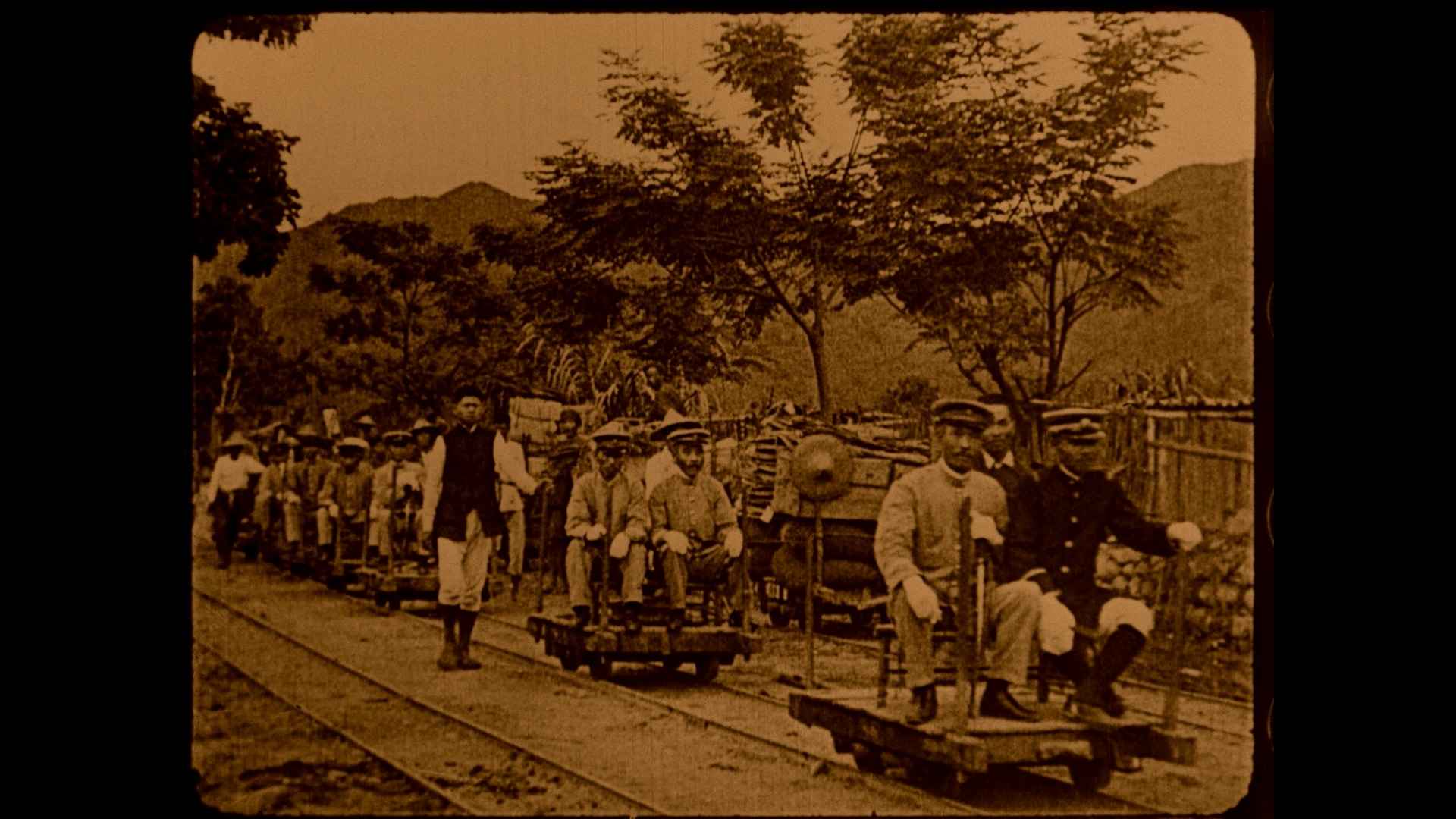
《福爾摩沙》Formosa
荷蘭 / Netherlands
荷蘭 Netherlands |1917|7分38秒
「福爾摩沙」源自於葡萄牙語的 “Formosa”,過去曾是臺灣的別名,意指「美麗的」或「美麗的島嶼」。
本片《福爾摩沙》描述在日本統治時期,臺灣的地景、建築、風俗、文化、農業、自然景觀、原住民族與殖民軌跡,亦反映著當時世界對臺灣的理解與想像。該片也是現存最早在臺灣拍攝、拍攝臺灣的電影。
這部介紹式的紀實影片,來自1991年荷蘭電影博物館贈予複製拷貝。根據荷蘭電影博物館的紀錄,他們所保存的硝酸片膠卷(非透過原始負片印製的正片)大約年份為1922年;而根據學者李道明的研究,影片可能拍攝於1917年。但正片拷貝究竟何時出品、流落何方,已不可考。
Formosa depicts the landscapes, architecture, customs, culture, agriculture, natural scenery, Indigenous peoples, and colonial traces of Taiwan during the period of Japanese rule. It also reflects how the world at that time perceived and imagined Taiwan. This film is the earliest known surviving motion picture shot in and about Taiwan.
This introductory documentary was donated as a duplicate print by the Netherlands Filmmuseum (now Eye Filmmuseum) in 1991. According to the museum’s records, the nitrate print dates to approximately 1922. However, based on the research of scholar Lee Daw-ming, the film may have been shot as early as 1917. The exact date when the original positive film was produced and its subsequent whereabouts remain unknown.
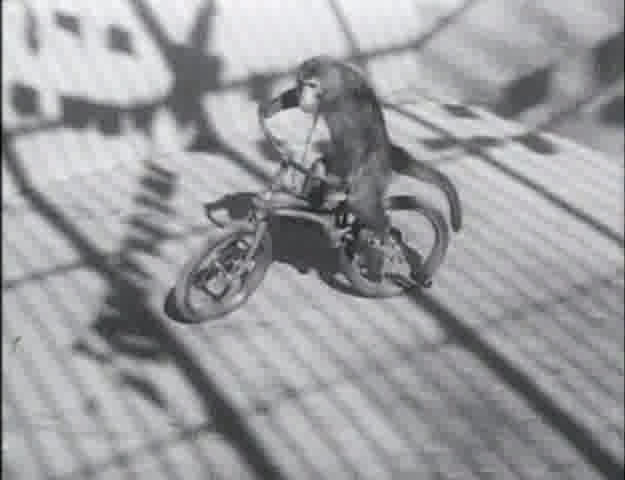
《動物表演》Animal Performance in Yuanshan Zoo
臺灣 / Taiwan
台影新聞片|民國41年4月4日|1分30秒|普遍級
民國41年4月4日,兒童節當天,臺北圓山動物園免費招待小朋友參觀,並且安排了動物表演的節目。猴子騎單車;山羊站在圓桶上,不停的轉動;猴子小姐坐三輪車由猴子先生拉車;猴子踩高蹺,驚險萬分。小朋友在這裡渡過了一個快樂的兒童節。
Taipei, April 4, 1952 — On Children’s Day, Yuanshan Zoo in Taipei offered free admission to children and presented a lively animal performance. Highlights included monkeys riding bicycles, goats balancing on barrels, and daring stilt-walking acts, providing a joyful holiday experience for young visitors.
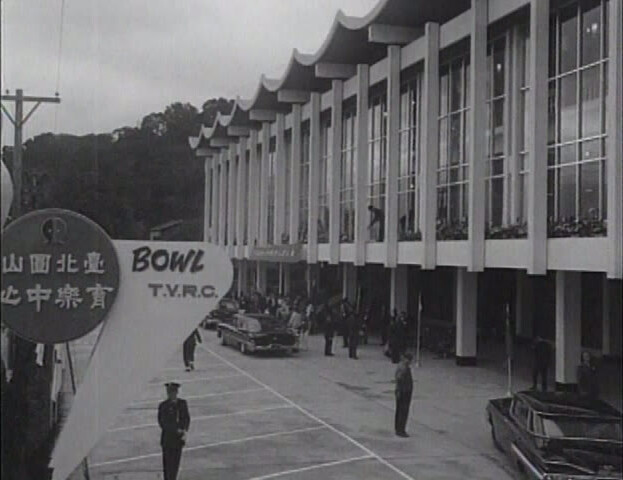
《圓山育樂中心揭幕》 Yuan Shan Recreation Center Grand Opening
臺灣 / Taiwan
台影新聞片|民國55年12月1日|1分30秒|普遍級
民國55年12月1日,臺北圓山育樂中心舉行開幕典禮,由臺灣省政府主席黃杰剪綵揭幕,由美國駐華大使馬康衛(Walter Patrick McConaughy, Jr.)夫人開球。接著影星張美瑤、張小燕、王莫愁、唐寶雲等人也紛紛打起保齡球。
圓山育樂中心保齡球館位在臺北市士林區,為旅日華僑劉天祿投資3000萬元於1966年建造,共設有36個球道、酒吧、餐廳以及大休息室,為全島最大的保齡球場,1967年保齡球館樓下又新設溜冰場。圓山保齡球館出現後,許多重要競賽也在此舉辦,連我國的保齡球協會都設址於此,帶動大眾對於保齡球運動的參與。
Taipei, December 1, 1966 — The Yuanshan Recreation Center officially opened in Shilin District, with Governor Huang Jie cutting the ribbon and Mrs. Walter McConaughy, wife of the U.S. Ambassador, making the ceremonial first throw. The center, built with a 30-million NTD investment by overseas Chinese Liu Tianlu, features 36 bowling lanes, a bar, a restaurant, and a lounge, making it Taiwan’s largest bowling venue. It soon became a hub for major competitions and the Taiwanese Bowling Association, while celebrities such as Chang Meiyao, Chang Xiaoyan, Wang Mochou, and Tang Baoyun joined the festivities and tried the lanes themselves.
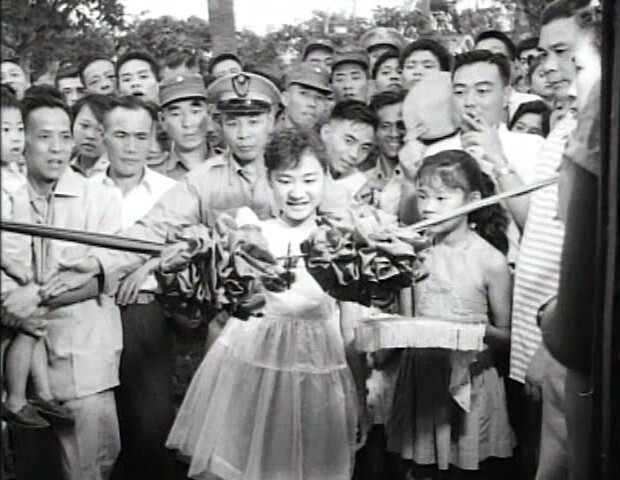
《兒童樂園游泳池開幕》Taipei Child Amusement Park Grand Opening
臺灣 / Taiwan
台影新聞片|民國48年6月5日|46秒|普遍級
民國48年6月5日,臺北市中山兒童樂園游泳池興建完成舉行開幕典禮,由亞洲最佳童星張小燕剪綵。數十人躍入泳池試泳新水。
Taipei, June 5, 1959 — Zhongshan Children’s Amusement Park celebrated the grand opening of its new swimming pool, with Asia’s top child star Chang Xiaoyan cutting the ribbon. Dozens of children eagerly took the plunge to test the fresh water.
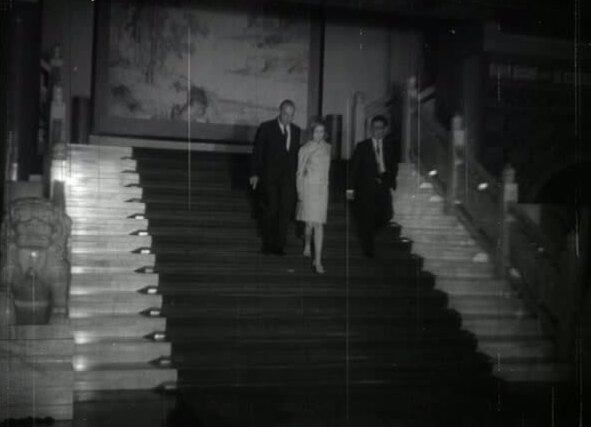
《瑪麗莎在台灣》Spanish teen star Josefa Flores González visits Taiwan
臺灣 / Taiwan
台影新聞片|民國55年4月2日|4分30秒|普遍級
民國55年4月2日,西班牙少女明星瑪麗莎(Josefa Flores González)於下午飛抵臺北,西班牙駐華大使胡國林夫婦特地前往機場獻花。瑪麗莎與隨行經紀人驅車前往下榻的圓山飯店稍作休息後,即在圓山飯店舉行記者會。4月4日,於中華體育館舉行2場慈善義演,替救濟院募款。瑪麗莎在表演中接受文化天使的獻旗後,開始表演歌唱。4月5日,瑪麗莎在機場舉行記者會,表達她對臺灣的喜愛。
Taipei, April 2–5, 1966 — Spanish teen star Josefa Flores González arrived in Taipei, welcomed by Spanish Ambassador Hu Guolin and his wife. After a press conference at the Yuanshan Hotel, she performed two charity concerts at Chung Hua Sports Arena on April 4 to benefit local orphanages, opening with a flag presentation by the Cultural Angel. She concluded her visit with a media appearance at the airport, expressing her admiration for Taiwan.
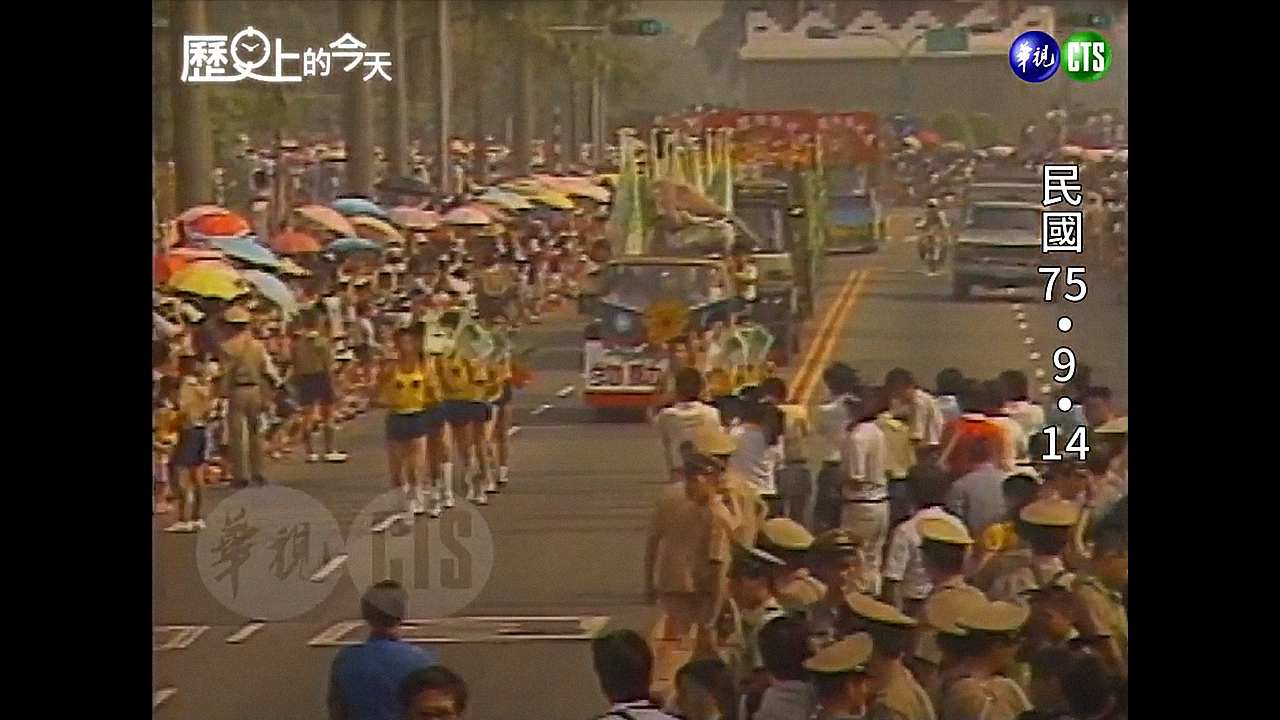
《告別圓山迎向木柵:動物園大搬家》From Yuanshan to Muzha: The Great Zoo Relocation
臺灣 / Taiwan
版權:中華電視公司 & 臺北市立動物園|1986|4分鐘|普遍級
1986年9月14日,臺北市立動物園大搬家,上百隻動物從圓山搬到木柵,園方為動物舉行了一場大遊行,動物遊行車隊行經的路線是由中山北路、復興橋、中山南路、羅斯福路、興隆路、萬芳路、新光路,到木柵新動物園。原先市政府估計這項活動大約只有二十萬左右市民能夠參加,但是在市民們熱烈響應下,已突破三十萬人以上,市民們的熱心、熱情,實在是令人感動。
建立於1914年的圓山動物園,在經營了72個年頭之後,因動物種類增多、圓山園址腹地也無法擴建,在經過臺北市政府的規畫後,認為位於木柵的腹地地形平緩、且離臺北市區不遠,適合動物居住及展示,於是拍板定案將木柵設為動物園新址,而圓山動物園則於1986年8月15日閉幕。 動物園大搬家工程浩大,事前的規劃必須確實無誤,路線探勘、箱籠製作、動物的健康檢查等等都必須到位,全程還要有獸醫陪同安撫情緒,雖然過程中時分辛苦,但最後還是讓整個搬遷任務順利完成。
On September 14, 1986, the Taipei Zoo held a grand relocation event, moving over a hundred animals from Yuanshan to Muzha. The zoo organized a parade for the animals, with the convoy traveling along Zhongshan North Road, Fuxing Bridge, Zhongshan South Road, Roosevelt Road, Xinglong Road, Wanfang Road, and Xinguang Road to reach the new Muzha site. The city government initially estimated that about 200,000 residents would attend, but public enthusiasm exceeded expectations, with more than 300,000 people participating — a truly touching display of civic warmth and support.
Founded in 1914, the Yuanshan Zoo operated for 72 years. As the number of animals grew and the site could no longer expand, the Taipei City Government decided to relocate the zoo to Muzha, an area with a flatter terrain and a suitable environment for animals, yet still close to downtown Taipei. The Yuanshan Zoo officially closed on August 15, 1986.
The relocation was a massive project requiring meticulous planning — including route surveys, cage construction, and animal health checks. Veterinarians accompanied the animals throughout the process to help calm them. Despite the challenges, the relocation mission was ultimately completed successfully.
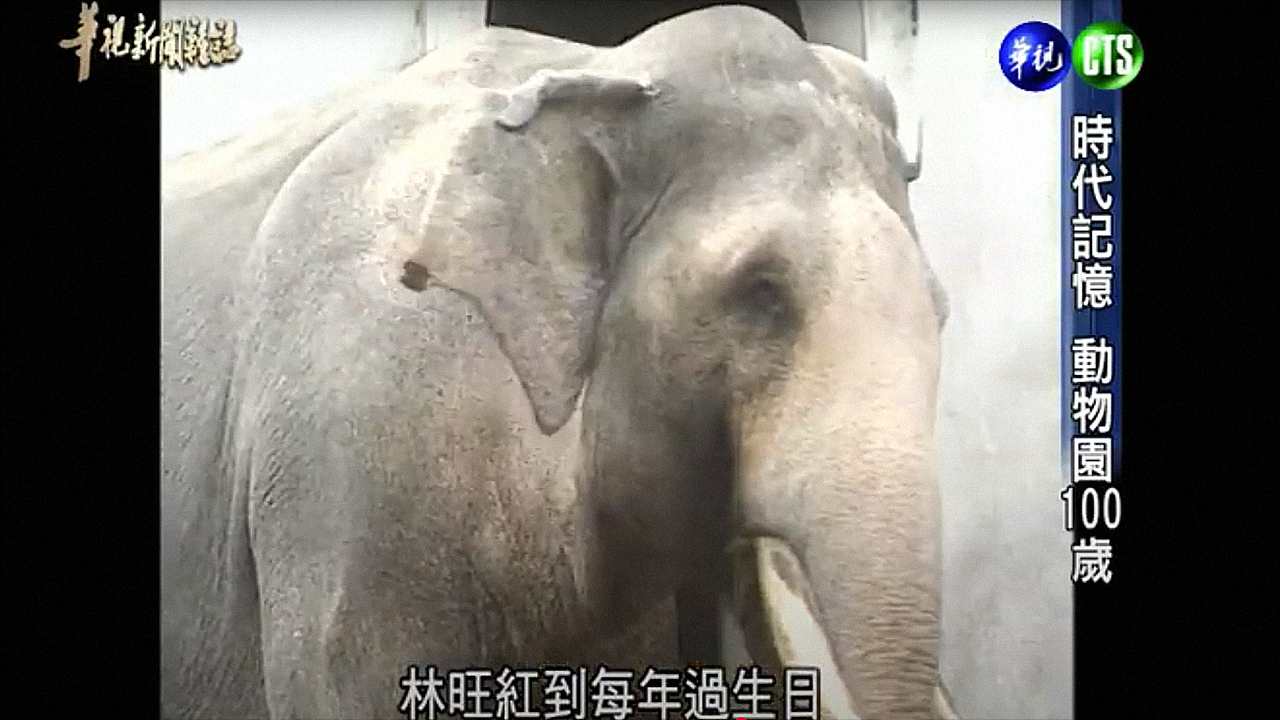
《時代記憶:動物園100歲》Memories of an Era: The Zoo at 100
臺灣 / Taiwan
版權:中華電視公司 & 臺北市立動物園|2014|11分04秒|普遍級
我們要帶您重溫舊夢。小時候大家的童年回憶,一定少不了動物園。
位在臺北木柵的臺北市立動物園,於2014年,滿100歲了。100年來經歷了許多重大里程碑。而談起動物園的誕生,得要從民國3年、日治時代開始說起,那時候,日本人在圓山經營動物園,但模式好比馬戲團一樣,有動物表演,像是黑猩猩騎單車、獅子跳火圈等等。 之後歷經二次大戰,到了民國59年,動物園就和兒童樂園合併一起經營;直到民國75年,才從圓山搬到了腹地寬敞許多的木柵。
就連明星動物,也在百年歷史中撐起了半邊天,從40年代開始的大象林旺、稱霸半世紀,緊接著無尾熊、國王企鵝旋風,如今是大貓熊寶寶「圓仔」當家。每一階段都有明星動物,更串起了百年史中、不同年代的共同記憶。
We invite you to relive a piece of childhood memory — the zoo.
Located in Taipei’s Muzha District, the Taipei Zoo celebrated its 100th anniversary in 2014, marking a century filled with important milestones. The zoo’s story began in 1914 during the Japanese colonial period, when the Japanese operated a zoo in Yuanshan. At that time, it was run more like a circus, featuring animal performances such as chimpanzees riding bicycles and lions jumping through fire hoops.
After surviving World War II, the zoo merged with the Taipei Children’s Amusement Park in 1970. In 1986, it was relocated from Yuanshan to its current, much larger site in Muzha.
Throughout its century-long history, many “star animals” have captured the hearts of visitors — from Lin Wang the elephant, who reigned since the 1940s, to the arrival of koalas and king penguins, and now the beloved giant panda cub, Yuan Zai. Each era has had its own animal icon, weaving together the shared memories of generations across the zoo’s hundred-year history.
長片放映介紹:
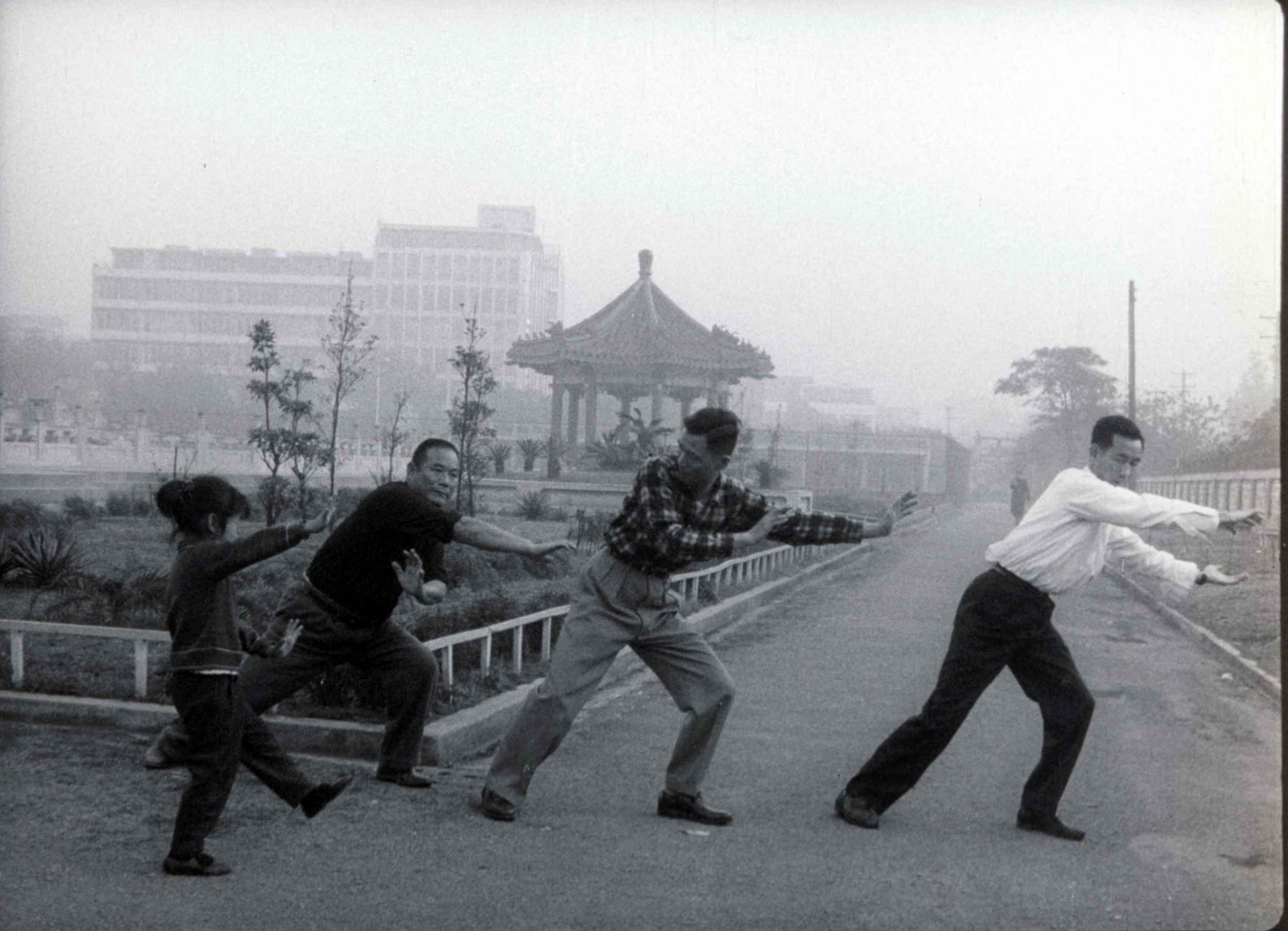
《台北之晨 (林強配樂版) 》A Morning in Taipei Newly Scored by Lim
臺灣 / Taiwan
導演:白景瑞 Pai Ching-Jui |1964|20分23秒
1964年,白景瑞導演拍攝電影《台北之晨》,彷彿用影像做了一首「給台北的歌」。2020年,音樂人林強與陳家輝則是真正將這首無聲的歌譜上了音符,各自用讀到的感受和觀察、細膩的手法,豐沛了這半世紀前的影像紀錄。
林強為《台北之晨》所做的配樂,魔幻寫實而感性。從晨鐘、鳥鳴,到二胡、木魚,再到人們誦經的聲音,當畫面從廟宇穿越到教堂,也巧秒的串接Gregorian chant風格吟唱的歌聲。在電子音符與訊號聲響的基底上,隨著畫面的牽動,時而交會著平交道與騎著單車的人們,或是排隊等著打卡的女工、等著過馬路的小學生與送信的郵差,這整段樂章鮮活了被稀釋的記憶,將《台北之晨》給明亮起來。陳家輝所做的配樂版本則是另一種解讀,以迷幻和抽象撞擊影像與想像。
劇照來源|國家影視聽中心提供
1960s. At dawn, the camera leads the viewers through a park, a church, a market and a textile factory. As a paper is thrown towards the door, we walk into the life of a middle-class family in Taipei.
Shot as a pseudo-documentary, A Morning in Taipei portrays an ordinary morning in the city. After the initial editing, it was dubbed with the sound recorded on location. Nevertheless, since it was a time when Healthy Realism dominated in the Taiwanese cinema, director Pai’s rough cut was not approved by the studios and the shooting was stopped. Four decades later, when the film is rediscovered, the experiment on aesthetics and the musicality of the image demonstrate not only the influence of Pai’s studies in Italy but his pioneering vision.
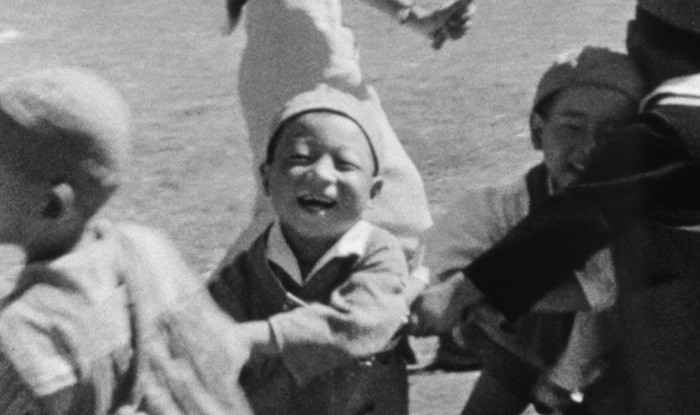
《鄧南光8mm電影 (數位修復版) 》DENG Nan-guang 8mm Collection (Digital Restoration)
臺灣 / Taiwan
導演:鄧南光 Deng Nan-Guang |1935|57分鐘
▶漁遊/1935/8mm/12分24秒 記錄鄧南光與家人搭船沿著淡水河嬉遊。 拍攝內容包含:船夫搖獎、撒網捕魚、下船游泳,接著上岸野炊料理漁獲,以及沿岸風光等。
▶臺灣博覽會/1936/8mm/5分36秒 始政四十周年記念臺灣博覧会,簡稱「臺灣博覽會」。日本統治台灣40週年時為了展示統治成果,臺灣 總督府於1935年(昭和10年)10月10日至11月28日在臺灣各地(以臺北為主場地)所舉辦的展覽會。歷時50天,觀人數將近275萬8千人(當時台灣居住人口約530萬人),是臺灣有史以來第一次舉辦規模如 此龐大的博覽會。 影片主要拍攝設於臺北新公園(今:228和平紀念公園)第二會場的臺博祭活動及各場館。第一會場則 設於臺北公會堂(今:臺北中山堂)附近。
▶正月訪客/年代不詳/8mm/1分 紀錄農曆過年期間親朋好友歡聚一堂的模樣。
▶小観音雪見物/1936(昭和11年).1.19/8mm/2分14秒 趁著積雪未退,一行人搭公車到草山(今:陽明山國家公園)登山健行。 影片中記錄著當時小觀音山和竹子湖的風貌,及臺北州蓬莱米竹子湖原種田的設置碑。1923年日本統治臺灣時曾選定竹子湖盆地為原種田(稻米試驗區),並成功栽培出蓬萊米秧苗,之後才向全臺各地推 廣,成為臺灣廣為食用的稻米。
▶ダグラス来/1936.3.28/8mm/1分50秒 拍攝道格拉斯雙引擎螺旋槳起降。道格拉斯飛行器公司(Douglas Aircraft Company)是美國著名的飛機 製造商,製造了一系列著名的民用和軍用飛機。
▶臺北幼稚園運動會/年代不詳/8mm/8分 長子鄧世光就讀愛國婦人會臺灣本部附屬臺北幼稚園的運動會紀錄。拍攝幼兒們的大會旗表演、紅白對 抗、拔河等各項競賽表演節目。 愛國婦人會臺灣本部設置於臺北市表町1丁目54番地(今:臺北市中正區襄陽路9號一帶),除了事務所 之外,還附設了臺北幼稚園、私立女子職業學校及兒童健康相談所等機構。 ▶某一天/年代不詳/8mm/5分45秒 拍攝三女二男到戶外嬉遊、湖邊划船、盪鞦韆、在草地上吸菸及彈著烏克麗麗、跳舞等。
▶淡水河/年代不詳/8mm/12分25秒 拍攝母子(並非鄧南光的妻兒)到淡水河畔遊玩,以及臺北橋下大稻埕碼頭交易,挑著擔子在臺北橋上 賣冰、賣菜的攤販等。記錄當時淡水河沿岸與大稻埕碼頭的各種風貌。(此主題包含多段影片,從服裝判斷應該是不同時間,並非同一日拍攝) 影片中的臺北橋仍為鐵桁架橋。1921年(大正10年)2月臺灣總督府將原本是木造的臺北橋重建為能讓 現代車輛通行的鐵桁架橋,直到1960年因鏽蝕問題日益嚴重,再度拆除改建為為水泥橋。
▶去看海女/年代不詳/8mm/7分22秒 拍攝房總半島(千葉県南房総白浜)的海女,她們靠捕捉海草和鮑魚維生,春耕時期則下田幫忙插秧。 明治初期至大正年間,當時的海女為了減少水的阻力並方便工作,上半身裸露,下半身只裹著木綿白 布,頭髮則簡單用布綁起來便下海工作。
DENG Nan-guang was a pioneer Taiwanese photographer in the 1930s and the first one to capture the images of Taiwan on film. The clips, often regarded as “family films” feel natural and intimate, but nevertheless, they reflect the Taiwanese traditions of the time. Moreover, they are precious images shot from a civilian’s point of view.
Shot between 1935 and 1941, these short films including The Fishing Trip which the shows DENG’s family outing in a boat, Taiwan Expo News on 8mm, which documented the expo held to celebrate the 40th anniversary of the Japanese rule, Kindergarten Games, a sports day in the kindergarten where DENG’s son attended, Some Day that shows young people picnicking, boating and playing music on the meadow, Tamsui River which reveals the scenic route along the river and Fisherwomen, about the women who harvested seaweed and abalone on the Japanese coast.
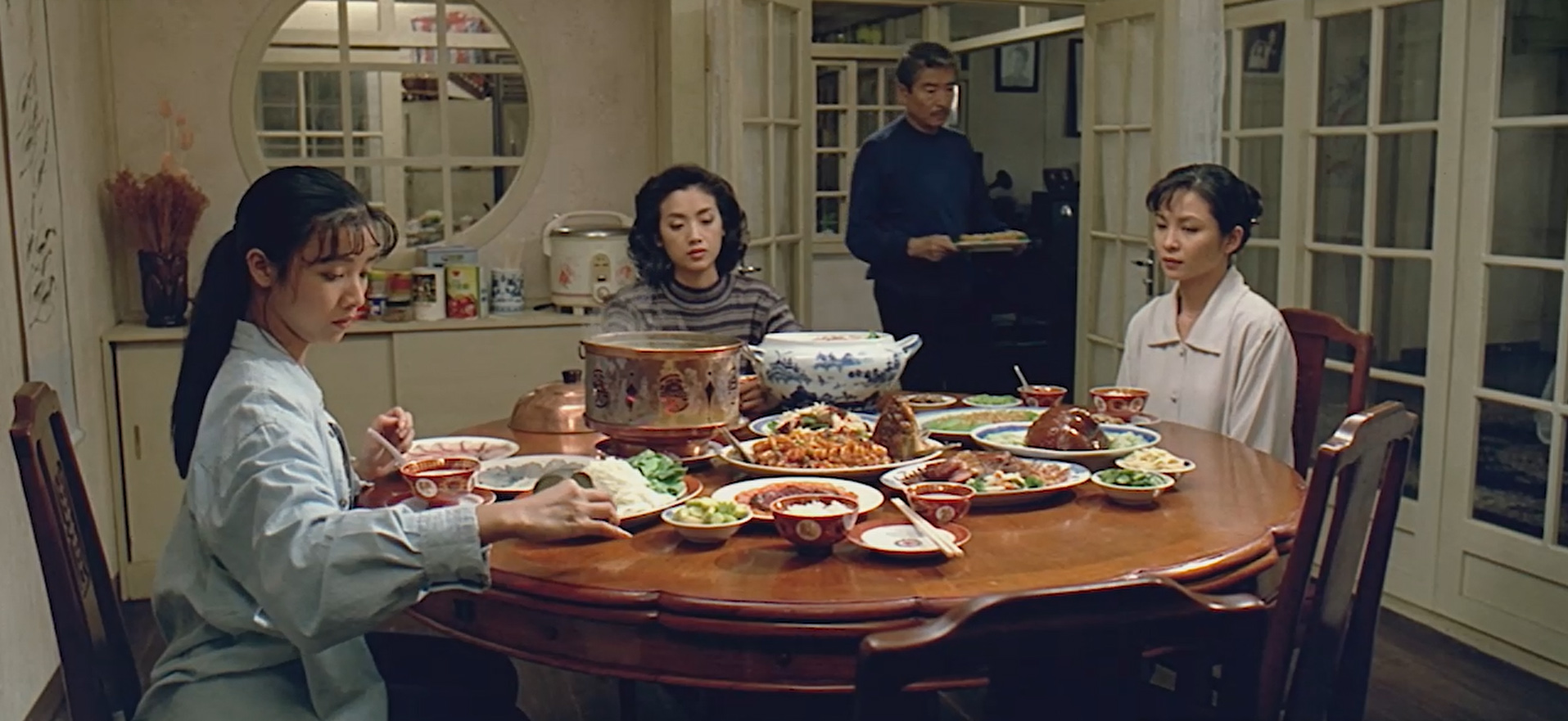
《飲食男女 (數位修復版) 》Eat Drink Man Woman (Digital Restoration)
臺灣 / Taiwan
導演:李安 Ang Lee |1994|127分鐘
朱老先生雖然是臺北最了不起的一位國宴主廚,但是他家中也和一般人一樣有許多問題,他有三位待字閨中但卻充滿叛逆個性的女兒。在朱老先生家的隔壁最近搬來了一位聒噪的寡婦梁老太太,她幻想著朱老先生會不會為她煮出一桌絕頂好菜,但就在同時,有人懷孕、有人被拋棄、有人終於找到真正的愛情、也有人死去。觀眾絕對會對戲中人物的發展感到意外。
在這齣可口、溫馨的喜劇之中,導演李安再一次將意外與情感的糾纏調理成一到豐盛的電影大餐,他用喜劇的手法解決了這個我們常見的家庭問題,並使這個四分五裂家庭又能再度團聚於一桌。
Eat Drink Man Woman is a classic tale of simmering frustrations and relationship woes as semi-retired Master Chef Chu shares his culinary skills and tends to his three unmarried daughters’ respective emotional journeys. Jia-Jen is a chemistry teacher, Jia-Chien an airline executive and Jia-Ning works at a fast-food establishment. Together they help prepare and eat a sumptuously elaborate dinner each Sunday, a family tradition which allows for considerable insight into their lives and fuels the fire for each daughter to deal with the turmoil of new romantic challenges.
